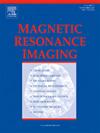Magnetic resonance imaging in lymphedema: Opportunities, challenges, and future perspectives
IF 2
4区 医学
Q2 RADIOLOGY, NUCLEAR MEDICINE & MEDICAL IMAGING
引用次数: 0
Abstract
Magnetic resonance imaging (MRI) has become a pivotal non-invasive tool in the evaluation and management of lymphedema. This review systematically summarizes its current applications, highlighting imaging techniques, comparative advantages over other modalities, MRI-based staging systems, and emerging clinical roles. A comprehensive literature review was conducted, covering comparisons with lymphoscintigraphy, ultrasound, and computed tomography (CT), as well as studies on the feasibility of multiparametric MRI sequences. Compared to conventional imaging, MRI offers superior soft tissue contrast and enables detailed assessment of lymphatic anatomy, tissue composition, and fluid distribution through sequences such as T2-weighted imaging, diffusion-weighted imaging (DWI), and magnetic resonance lymphangiography (MRL). Standardized grading systems have been proposed to support clinical staging. MRI is increasingly applied in preoperative planning and postoperative surveillance.These findings underscore MRI's diagnostic precision and clinical utility. Future research should focus on protocol standardization, incorporation of quantitative biomarkers, and development of AI-driven tools to enable personalized, scalable lymphedema care.
磁共振成像在淋巴水肿:机遇,挑战和未来的观点。
磁共振成像(MRI)已成为一个关键的非侵入性工具,在评估和管理淋巴水肿。这篇综述系统地总结了其目前的应用,强调了成像技术,相对于其他模式的比较优势,基于mri的分期系统,以及新兴的临床作用。我们进行了全面的文献综述,包括与淋巴显像、超声和计算机断层扫描(CT)的比较,以及多参数MRI序列的可行性研究。与传统成像相比,MRI提供了更好的软组织对比,可以通过t2加权成像、弥散加权成像(DWI)和磁共振淋巴管造影(MRL)等序列详细评估淋巴解剖、组织组成和流体分布。标准化的分级系统已被提出以支持临床分期。MRI在术前计划和术后监测中的应用越来越广泛。这些发现强调了MRI的诊断准确性和临床实用性。未来的研究应侧重于方案标准化、定量生物标志物的结合以及人工智能驱动工具的开发,以实现个性化、可扩展的淋巴水肿护理。
本文章由计算机程序翻译,如有差异,请以英文原文为准。
求助全文
约1分钟内获得全文
求助全文
来源期刊

Magnetic resonance imaging
医学-核医学
CiteScore
4.70
自引率
4.00%
发文量
194
审稿时长
83 days
期刊介绍:
Magnetic Resonance Imaging (MRI) is the first international multidisciplinary journal encompassing physical, life, and clinical science investigations as they relate to the development and use of magnetic resonance imaging. MRI is dedicated to both basic research, technological innovation and applications, providing a single forum for communication among radiologists, physicists, chemists, biochemists, biologists, engineers, internists, pathologists, physiologists, computer scientists, and mathematicians.
 求助内容:
求助内容: 应助结果提醒方式:
应助结果提醒方式:


